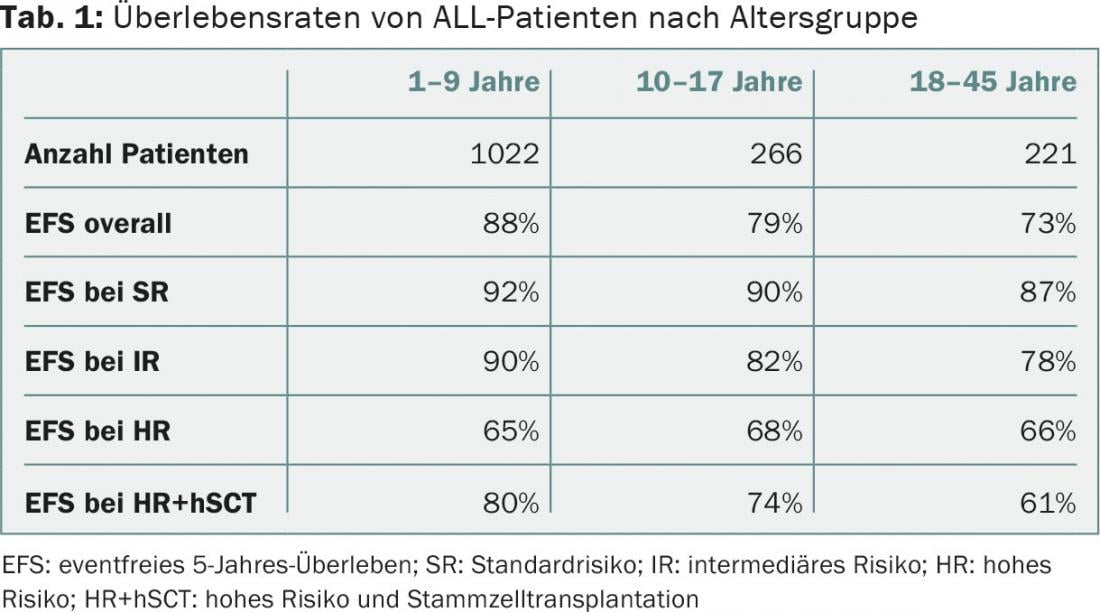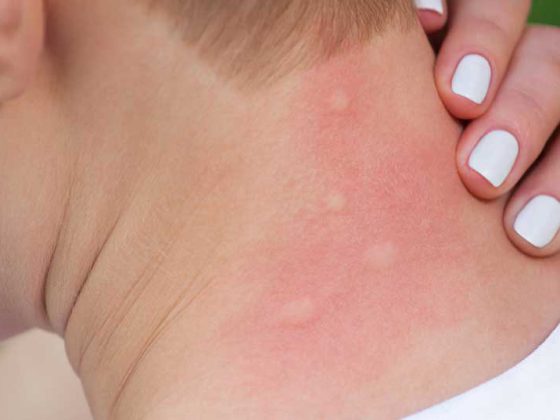This year, the congress of the European Hematology Association (EHA) was held in Copenhagen from June 9-12. We report encouraging study results on the therapy of AML in elderly patients and improved survival of adults with ALL. Initial results of an experimental gene therapy in hemophilia B give hope that in the future these patients may no longer need regular factor IX injections to avoid severe bleeding.
Treatment of acute myeloid leukemia (AML) in elderly patients is often difficult because they usually do not tolerate intensive chemotherapy well. Therefore, demethylating agents such as decitabine or azacitidine (HMA) are used instead. At the EHA, data were presented from a phase 1 trial in which elderly AML patients who had refused aggressive therapy were treated with vadastuximab talirine (SGN-CD33A/33A) in combination with azacitidine or decitabine [1]. 33A is a conjugate of an antibody and a cell-killing agent that targets CD33 – a receptor expressed on tumor cells in most patients with AML.
Faster and more sustained remissions in older AML patients.
Fifty-three AML patients (64% men, median age 75 years) received combination therapy of azacitidine or decitabine plus 33A. 73% achieved complete remission, on average after two cycles of treatment. Mortality rates were 2% at 30 days and 8% at 60 days. 70% of patients were still alive at the time of data presentation with a median follow-up of 4.7 months (median progression-free survival in patients with complete remission is currently 6.9 months). The most common grade 3 or higher adverse events were febrile neutropenia, thrombocytopenia, and anemia.
The study authors concluded that the combination of 33A and HMA was well tolerated and induced sustained remissions. Remission occurred more rapidly and reliably in approximately 50 treated patients, compared to historical remission rates with HMA monotherapy in this patient population. In these AML patients with unfavorable risk factors, the low mortality rates and high remission rates are particularly encouraging. A Phase 3 trial (33A+HMA vs. HMA) is planned to start this year.
Improved survival in ALL patients
Since June 2008, all children and adult patients (18-45 years) with acute lymphoblastic leukemia (ALL) in Denmark, Sweden, Finland, Iceland, Lithuania and Estonia have been treated according to the NOPHO-ALL2008 protocol. This prescribes a classification of patients into four risk groups: Standard risk [SR], intermediate risk [IR], high risk [HR] and high risk + stem cell transplant [HR+hSCT] (according to response to therapy after 29 days of treatment). Now, we investigated how the use of the protocol affected the 5-year event-free survival (EFS) of the patients [2].
Data from 1509 patients were included in the analysis, 221 of whom were adults. In the adult group, a higher proportion was affected by an IR or HR than in children (1-9 years) and adolescents (10-17 years) (Table 1) . The overall EFS was 73% in adult patients (children 88%, adolescents 79%). A significant difference between children and adults in terms of EFS was seen only in the patient groups with IR and HR+hSCT; in the SR and HR groups, the rate of EFS was virtually the same. The authors of the study draw a pleasing conclusion:
- EFS of adult ALL patients has improved from 40% (historical data) to 73% with the introduction of the NOPHO-ALL2008 protocol. This means that the EFS of adults is now almost as good as that of children.
- Adult ALL patients are more likely to be high-risk than children.
- Adults tolerate intensive chemotherapy almost as well as children.

Successful gene therapy for hemophilia B
Around 80,000 men worldwide suffer from hemophilia B – in this disease, clotting factor IX (FIX) is not sufficiently functional or is missing altogether. In individuals without hemophilia B, the serum FIX level is 40-150 IU/dl; in individuals with severe hemophilia B, it is less than 1%. Affected patients must receive FIX intravenously once or twice a week to avoid bleeding complications. To avoid spontaneous joint bleeding, a FIX value of 12 IU/dl must be achieved.
At the EHA Congress, researchers from the USA presented a study in which patients with hemophilia B were treated with gene therapy [3]. They received a single dose of SPK-9001, an experimental product used to transfer functional FIX genes so that the body can produce FIX itself. By the time of the Congress, four patients had been treated and followed up during 7-26 months. None of the patients experienced side effects and none required immunosuppression following treatment.
The four patients achieved FIX levels of 32, 39, 25 and 27 IU/dl in the days and weeks after infusion, which is well above the target of 12 IU/dl, and in the two patients treated first, the FIX level increased steadily during the weeks after infusion. All four patients can currently do without the weekly FIX infusion.
New diagnostic method for CNS lymphomas
CNS lymphomas are aggressive tumors that must be diagnosed quickly to have a chance of successful treatment. Stereotactic biopsy is usually necessary for diagnosis, but its analysis requires some time. In the present study, we tested whether the time to diagnosis could be shortened by examining the irrigation fluid of the biospy [4]. Stereotactic brain biopsy was performed in 18 patients with suspected localized CNS lymphoma. After collection, the biopsy material and the irrigation fluid from the biopsy trocar were examined separately.
The result of histopathological examination was diffuse large B-cell lymphoma in ten patients and other disease (glioblastoma, stroke, etc.) in eight patients. The analysis of the rinsing fluid (cytomorphology, flow cytometry) showed the same diagnosis as histology in all patients (sensitivity and specificity 100%). Time to result averaged 4.5 days (range: 2-10 days) for histopathology and only five hours (range: 3-20 hrs) for irrigation fluid testing. According to the authors, these study results demonstrate that analysis of brain biopsy lavage fluid by cytomorphology and flow cytometry is a rapid and useful method to accelerate and refine the diagnosis of CNS lymphoma.
Source: EHA Congress, June 9-12, 2016, Copenhagen.
Literature:
- Fathi A, et al: SGN-CD33A Combined with Hypomethylating Therapy Produces High Remission Rates among Older Patients with AML. EHA21, 2016, Abstract: S503.
- Toft N, et al: Adults and children (1-45 years) with Ph-negative ALL have almost identical outcome in risk-stratified analysis of NOPHO ALL2008. EHA21, 2016, Abstract: LB173.
- High KA, et al: AAV-mediated gene therapy for hemophilia B-expression at therapeutic levels with low vector doses. EHA21, 2016, Abstract: LB771.
- Debliquis A, et al: Progress in the diagnosis of primary central nervous system lymphoma. EHA21, 2016, Abstract: PB2049.
InFo ONCOLOGY & HEMATOLOGY 2016; 4(5): 28-30.











